Despite its large size, dramatic terrain, and numerous facilities, Manhattan's High Bridge Park (which we last visited in 2013) has for a long time been a dead end in one important sense: the High Bridge itself was closed. 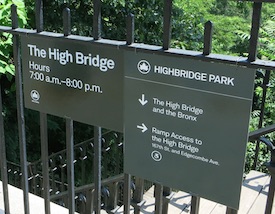
Finally, two years later than originally planned, and with Parks Commissioner Mitchell Silver in attendance but spoilsport Mayor de Blasio conspicuously absent, the High Bridge reopened to pedestrians and bicycles.
See the High Bridge Park Development Association website for a great 1879 drawing of the bridge from the Bronx side. It shows how the bridge looked before the middle section was replaced with a steel arch in 1927-28 so wider ships could get through. For a view from 2013 from Manhattan, showing the Bronx end of the bridge, with the original Roman-style stone arches, see the next photo:
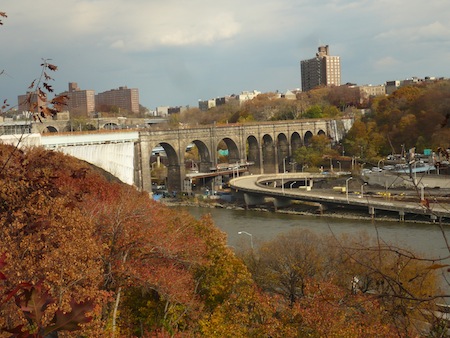
And in June 2015: now, with people!
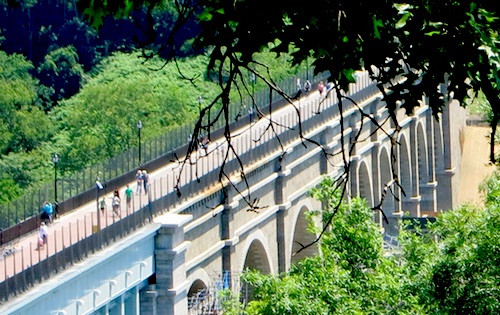
The Highbridge water tower on the Manhattan side is still inaccessible. The Urban Park Rangers at one time led occasional tours of the tower, but I can't find a current listing for any such.

For a bridge that's so high its very name attests to the fact, you have to descend a lot of stairs to get to the Manhattan-side entrance.
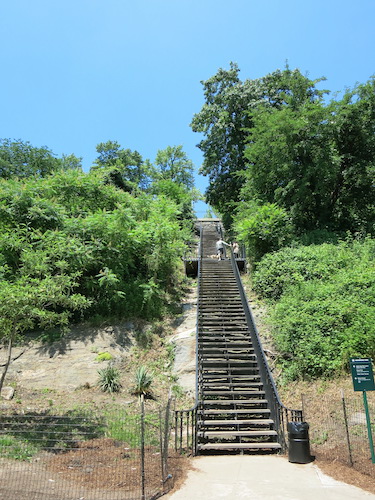
At this lower level a pleasant greenway runs parallel to the river below and offers a nice jungly view of the tower.

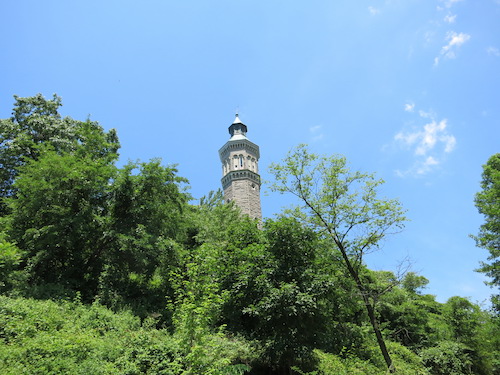
And there it is up ahead: the red-tiled walkway across the Harlem River.
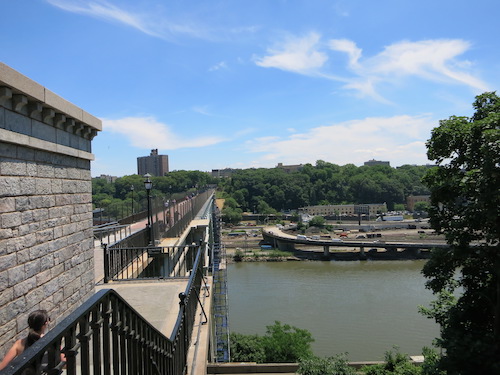
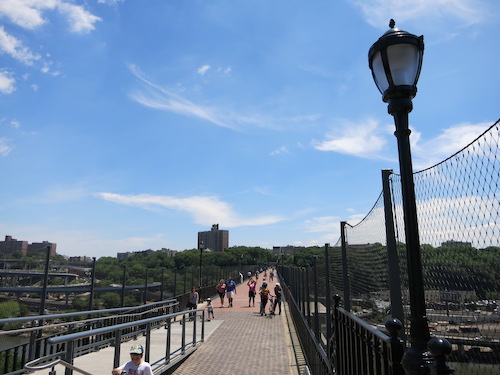
The High Bridge may not span the most picturesque stretch of New York City's vast system of waterways, but it still provides some nice views. Wise planners even picked out fencing with a pleasing geometric pattern.
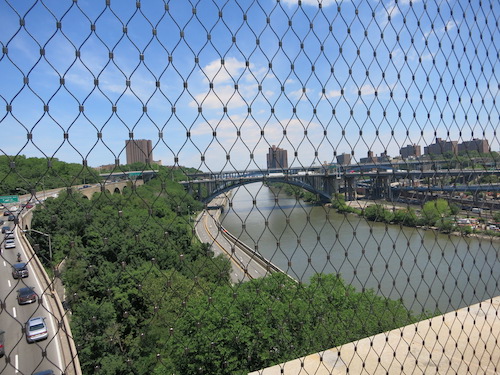
A series of plaques outline the High Bridge's long history…
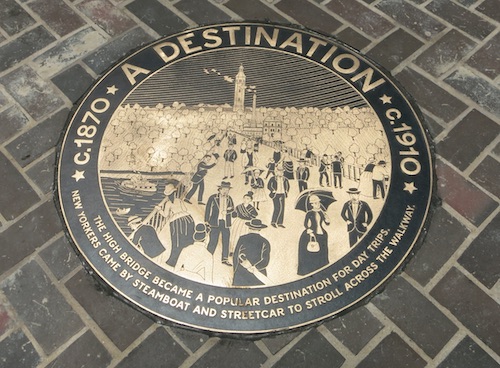
…in contrast to this vintage manhole cover. Does it go down to the aqueduct beneath? I'd sure like to know.
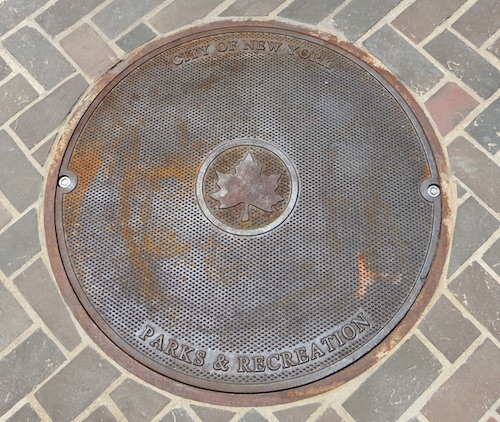
I especially like the depiction of these workers. The guy inside the pipe looks Chinese. Is the guy on the ladder from Mexico? Whatever the case, the illustrations on these plaques deserve praise.
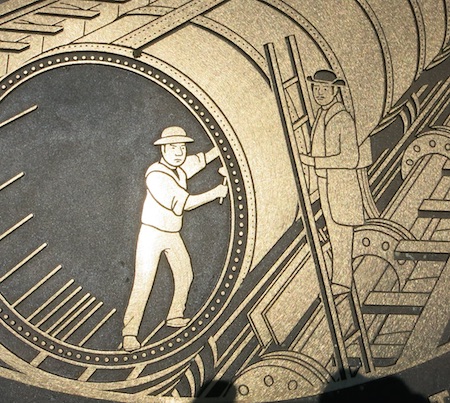
It's a pretty long walk in the hot sun, but at last: the Bronx side. And a lot fewer stairs at this end.
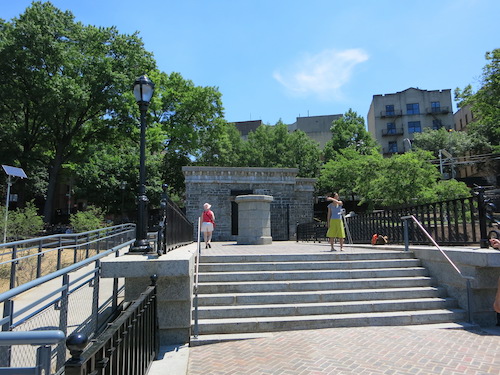
I'd be very interested to learn traffic numbers through the summer. Residents of the Highbridge neighborhood of The Bronx will be crossing to use Manhattan's big Highbridge Park. Going the opposite way will be Harlem residents who see the bridge as an extension of their park, as well as tourists from near and far who want to traverse the historic span and will mostly arrive from the Manhattan side. I hope someone's counting.
We've arrived at Highbridge Park, Bronx version. But there isn't much to this little park.
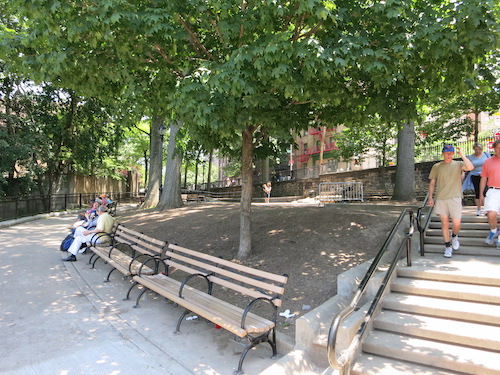
The handsome building on the left is the old Carmelite Monastery, now housing a Samaritan Village drug rehab center.
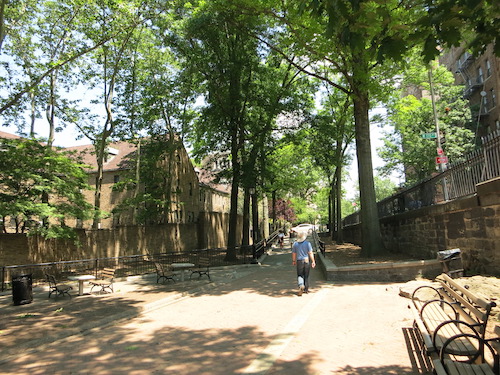
This frog is equipped to spit water from his mouth. Nothing was flowing at the moment. But he sits in a little channel that runs toward the aqueduct and suggests the original purpose of the magnificent High Bridge, now at last open again to the public.
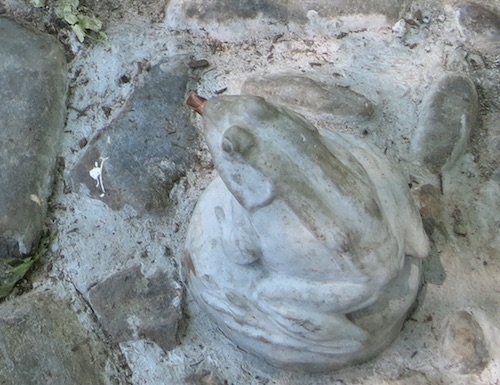
One of the best set of photos of Highbridge Park that I have seen since the opening, Keep up the good work. Would you mind giving permission to use some at highbridgeparkdevelopment.blogspot.com ?
ReplyDeleteWouldn't mind at all, just please credit me and include a link back to this post.
DeleteAnd let me know if you would like any hi-res image files. You can e me at jsobel123 at gmail
DeleteI love reading your posts. I love hanging out in NYC parks but the sketch factor of some the neglected ones keep me away. Your posts give me the guidance and courage to check them out myself. I would love to see the conclusion of the Highbridge Park saga and what the northern half has to offer. Do you think it's possible to walk the entirety of the park from 155th to Dyckman street?
ReplyDeleteThank you for the kind words, Bonnie. I don't know the answer to your question for sure, but now that the bridge itself has been reopened the two "halves" of the park may well be connected so that you can walk the whole length.
ReplyDelete